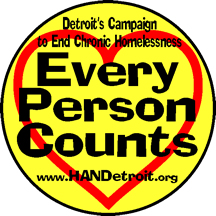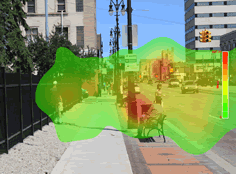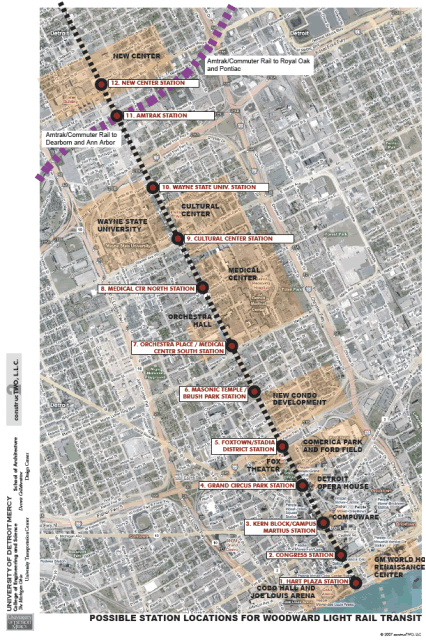
Homelessness:

For many years, Dr. Hoback helped the Homeless Action Network Detroit (HAND) with their Every Person Counts (EPC) census to count homeless people in Detroit. Dr. Hoback produced maps, trained census takers and tallied results.
Dr. Hoback has produced estimates for the number of homeless people who were couch homeless also sometimes called precariously housed, doubled up, couch surfers. This work has been cited in numerous newspapers.
Link to the research paper: Proposed Method for Estimating Local Population of Precariously Housed.
See the following tables for couch homeless rates in populated places in the US during 2000:
XLS 1
PDF 1
XLS 2
PDF 2
Community Planning:

Eye Tracking - determine the visually interesting areas of neighborhood to determine what people value most when asked about comfort, attractiveness, and safety.
Value Densification – a focus on investment and development in neighborhoods and districts where inhabitation, infrastructure, cultural and employment assets (and value) are in evidence.
Energy Use:

Dr. Hoback has involved his students in several projects to reduce energy use. We have worked with non-profit organizations, such as churches that operate warming centers for homeless, or run schools. Most small non-profit organizations are not experts in reducing energy use, and dedicate their resources to helping their target group, so experienced advice is useful to them.See more.
Architectural:
The Design Center in the School of Architecture involves the community in changing their world. One of the projects that Dr. Hoback and his students have helped with is the concept for a band shell in the Heidelberg Project formed from an existing house. The students evaluated the ground conditions to see anticipate challenges in excavation. Other students worked on evaluating the structure of the house. See the Design Center.
Also, Dr. Hoback trained architects and engineers to go to Haiti after their earthquake in 2010. The professionals checked whether schools were safe to be occupied.
Transit:

Masss transit draws communities together. It creates economic development and makes people healthier when they walk to the bus. It reduces pollution and saves energy.
Social Equity and 21st Century Transportation
Poster presented at Transforming Transportation, April 7, 2011, Detroit MI.
See Additional Transit Research.
Leadership Curriculum:
Dr. Hoback has been involved in several curriculum development projects that help students become leaders.